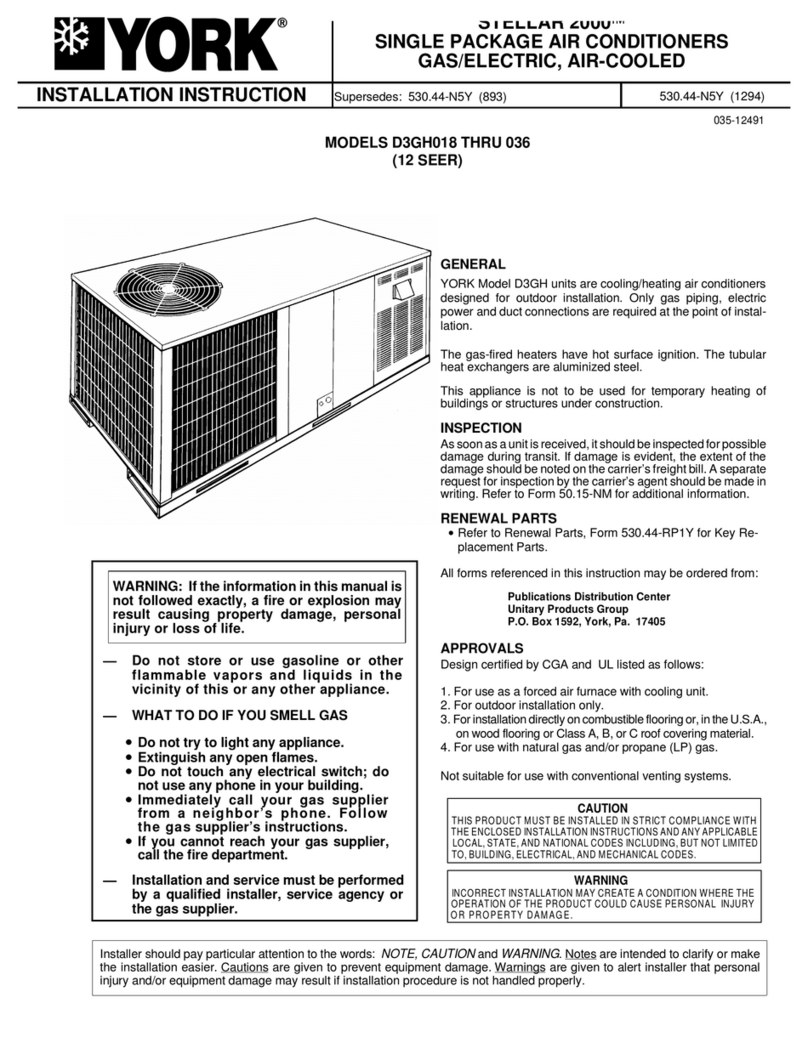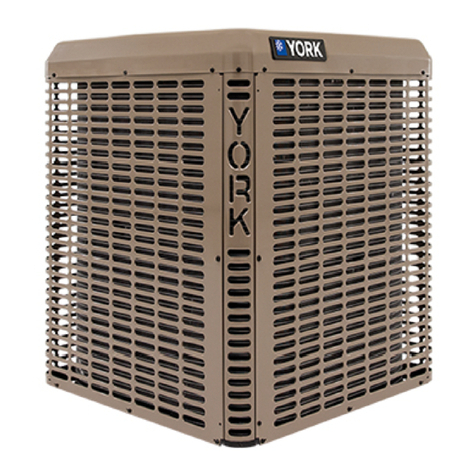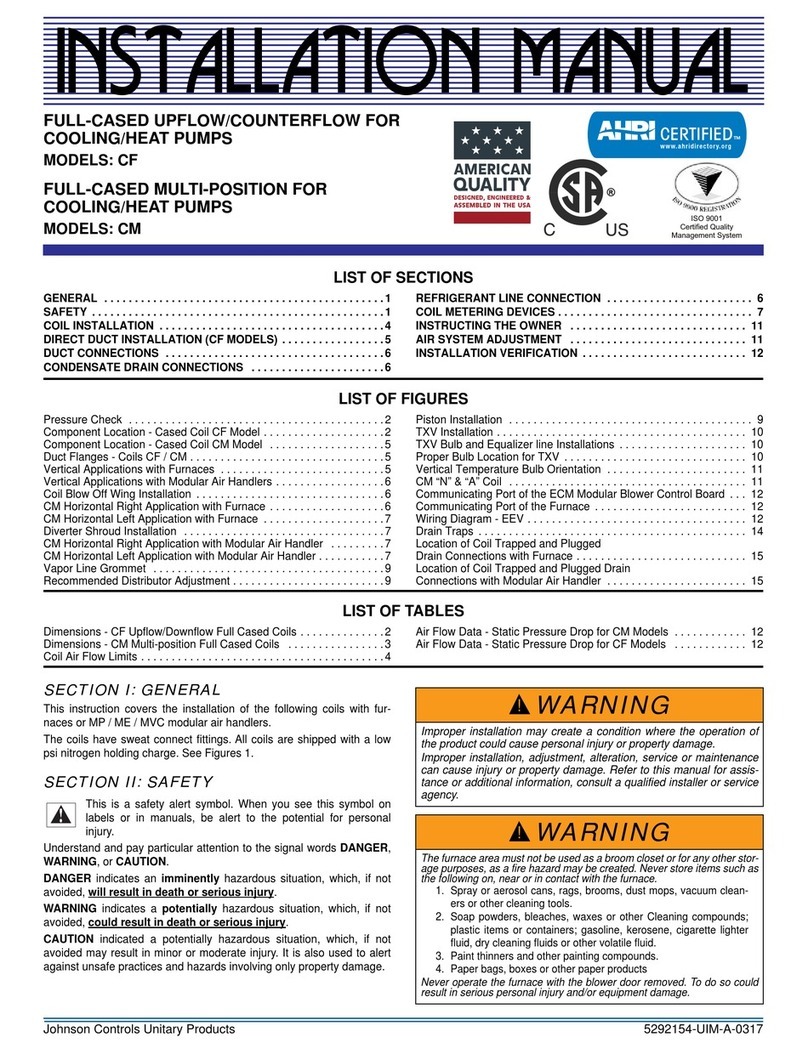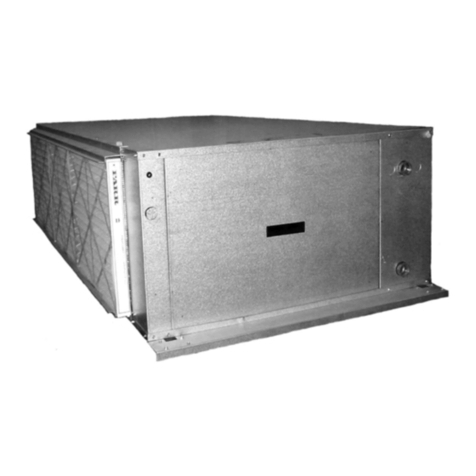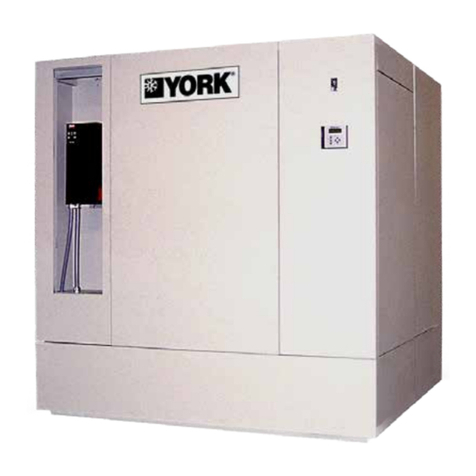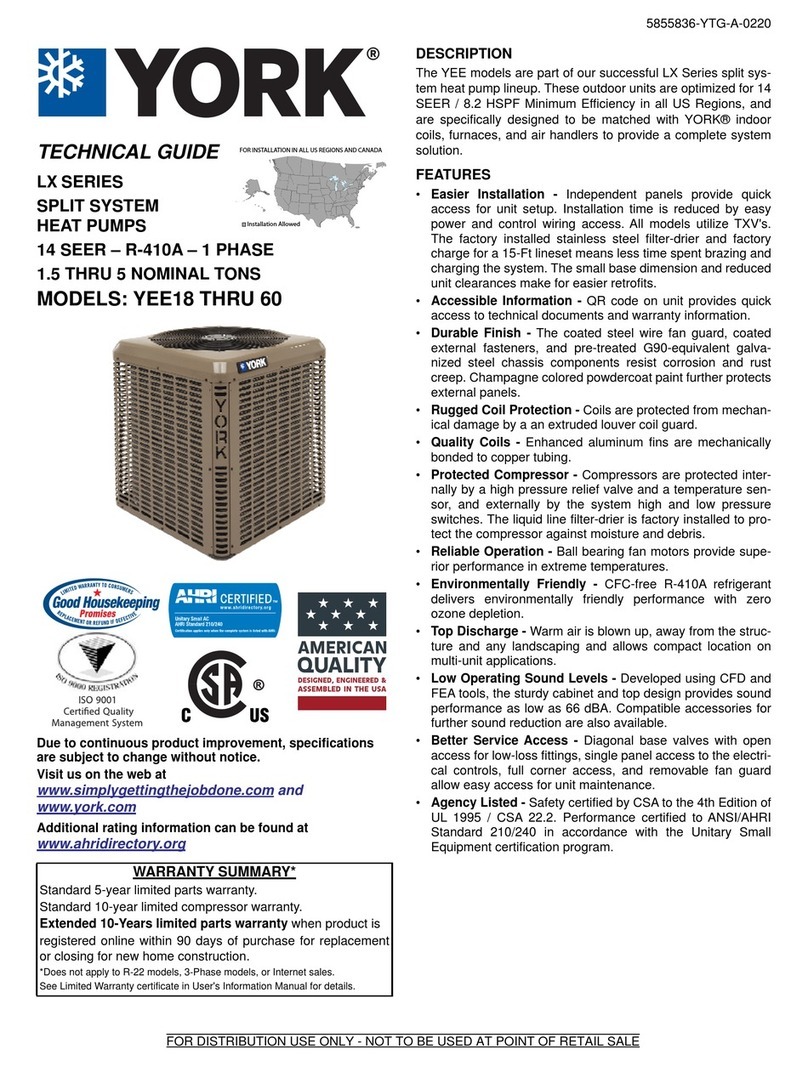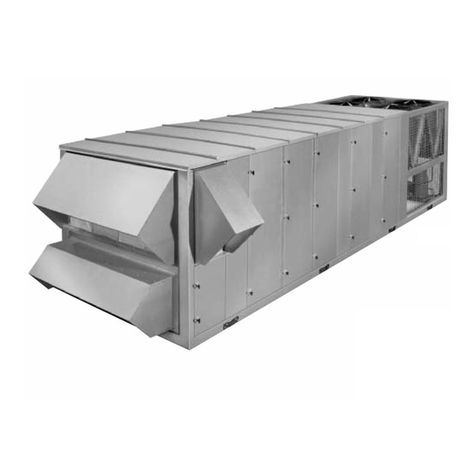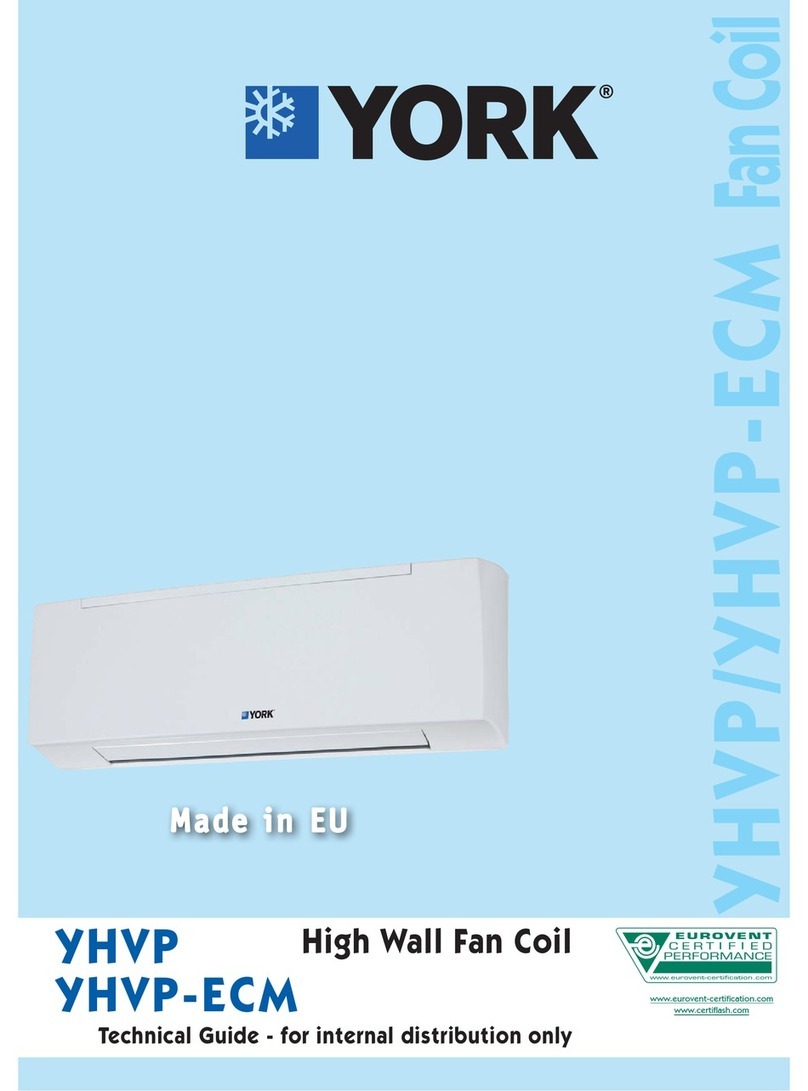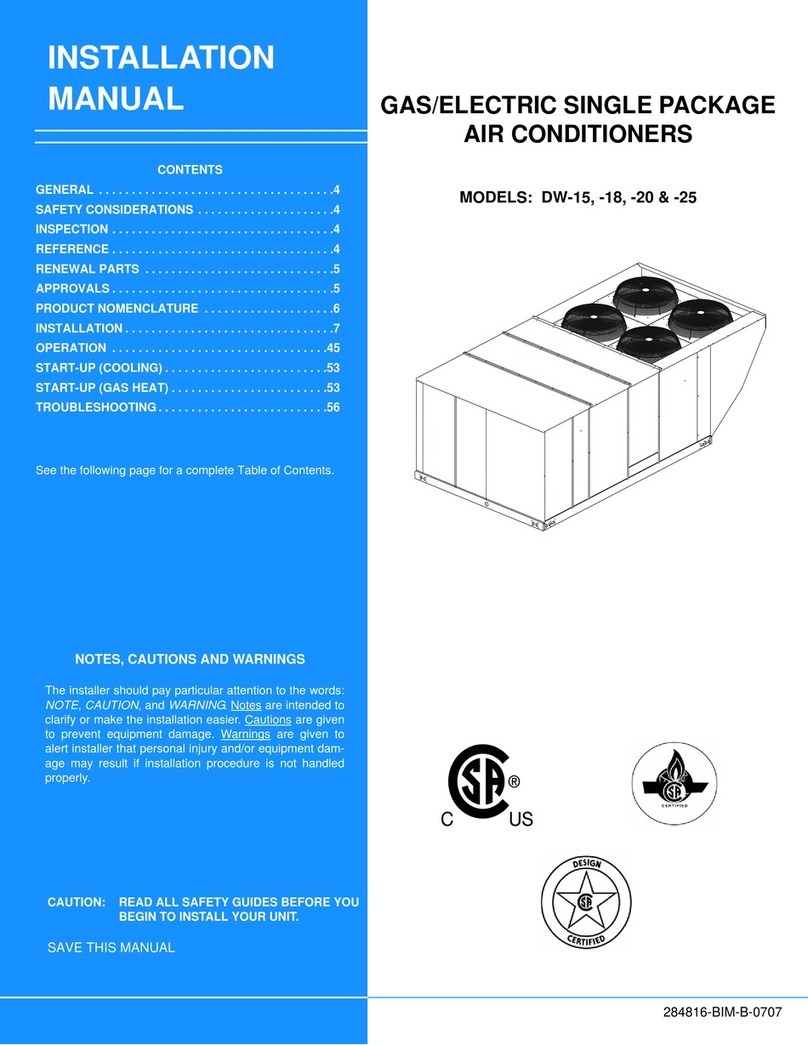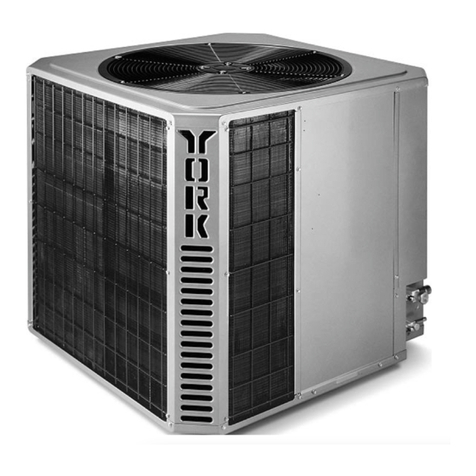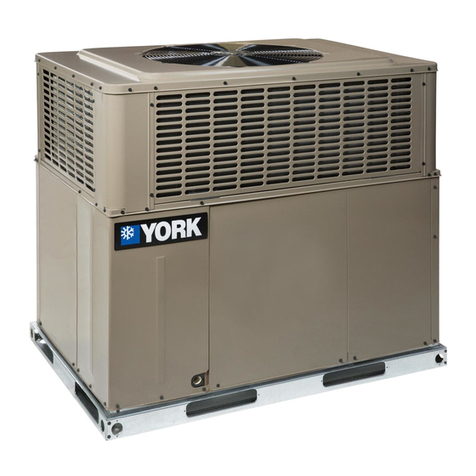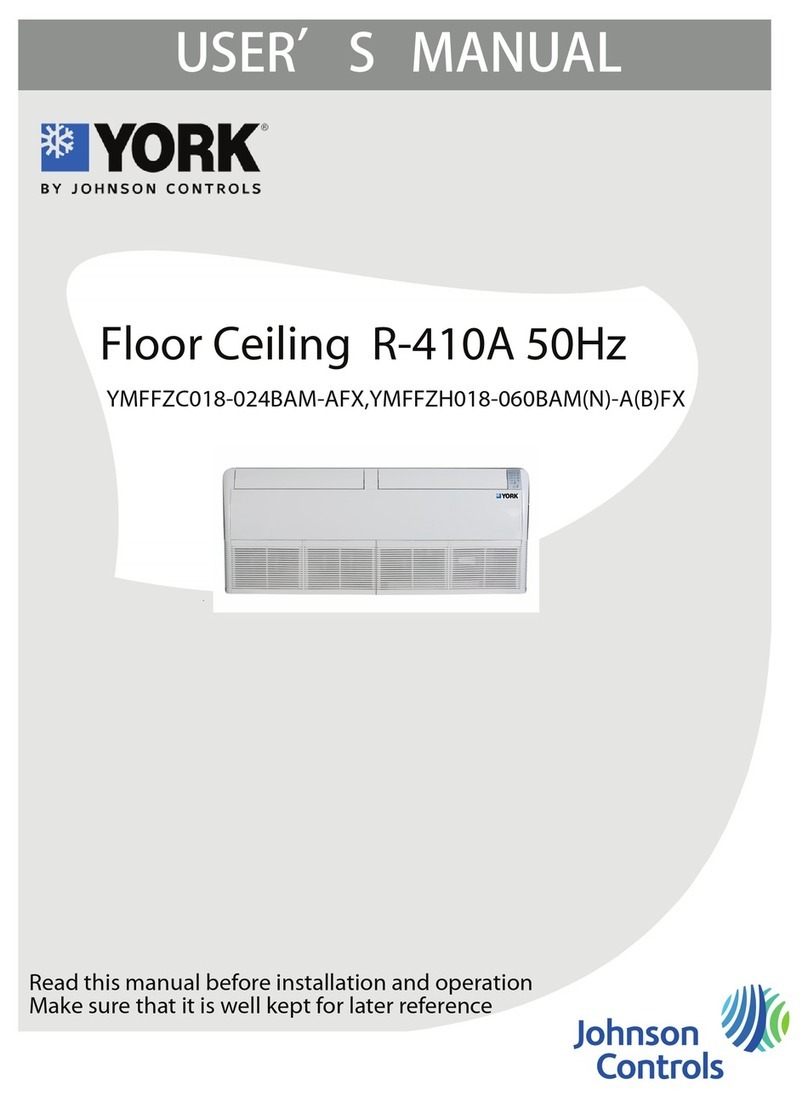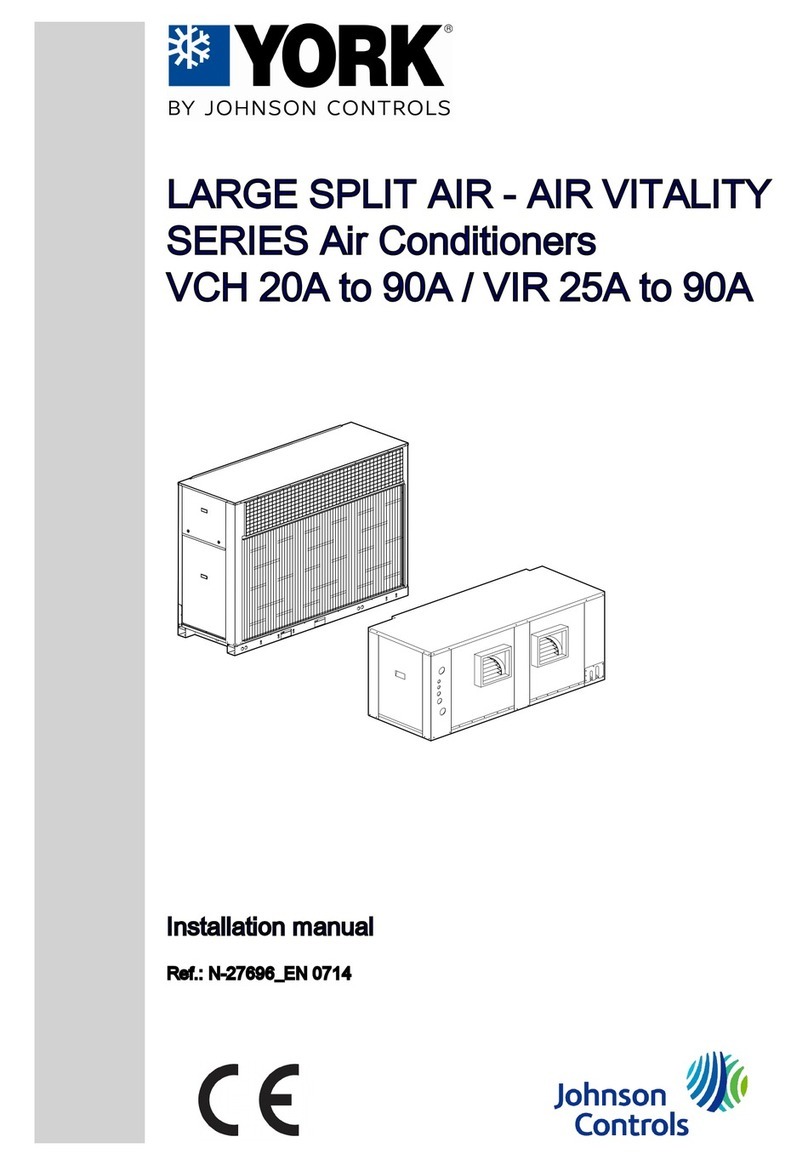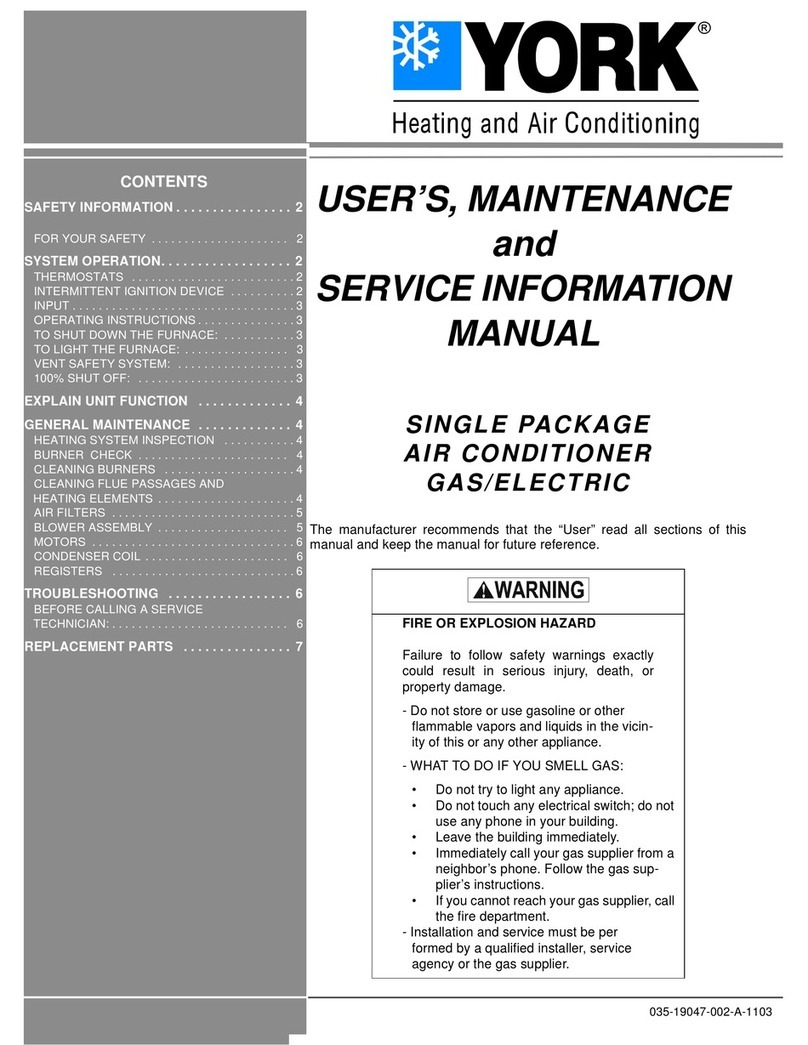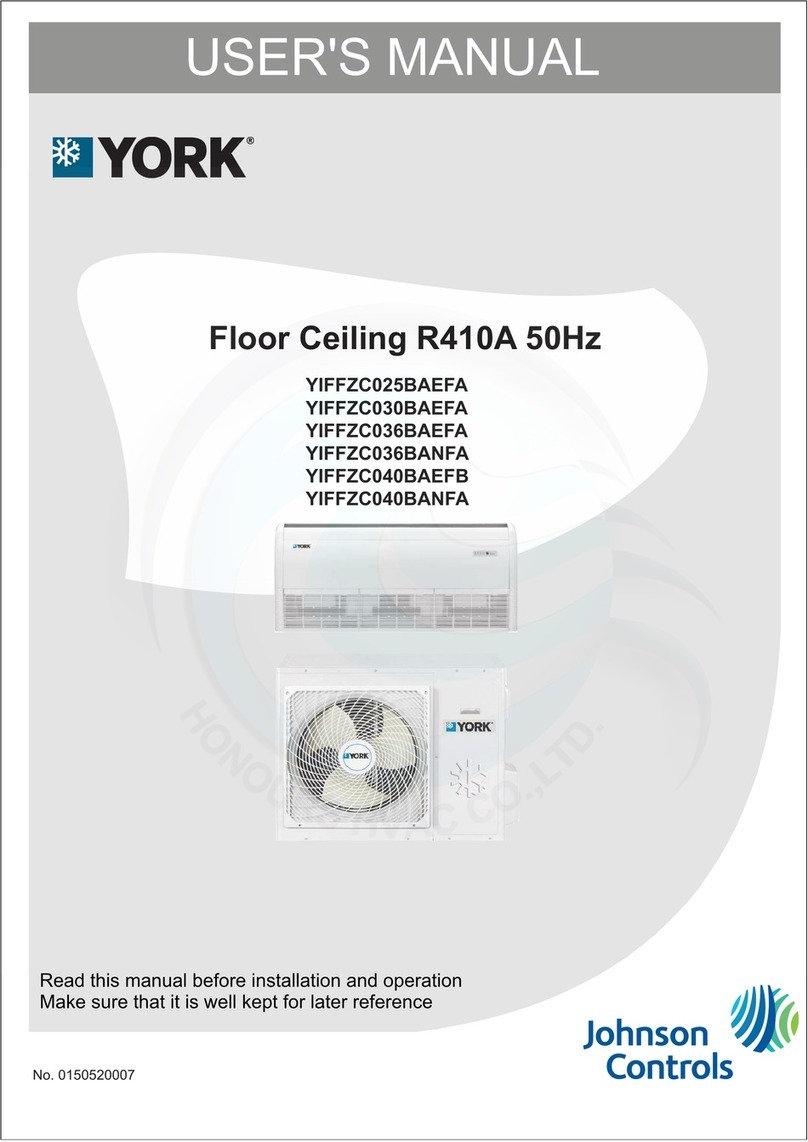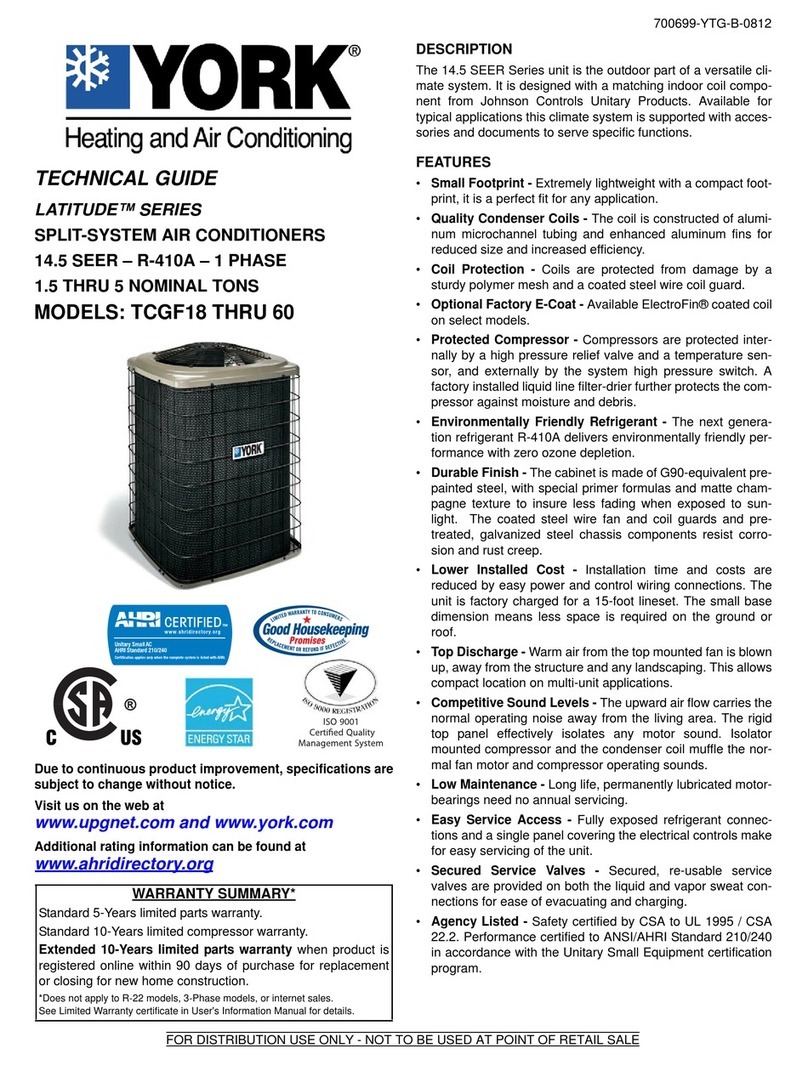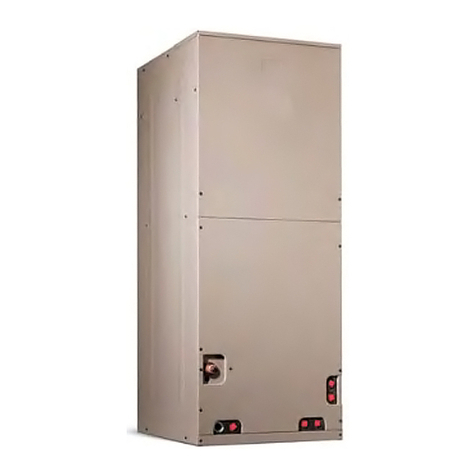10
SOC-076/SIC-076 7.1 11/2" (12.7 mm) 104
SOC-090/SIC-090/120 9.4 15/8" (15.87 mm) 170
SOC-120/SIC-090/120 11.45 15/8" (15.87 mm) 170
SOC-150/SIC-150 7 21/2" (12.7 mm) 104
SOC-180/SIC-180 9 25/8" (15.87 mm) 170
SOC-240/SIC-240 11.5 25/8" (15.87 mm) 170
Model Nominal
load
R-22 kg
Number
of
circuits
Diameter
liquid
line
Additional
load
grs. (per
meter)
SLOPE
2%
MINIMUM
75 mm
PLUG
Air ducts (indoor unit)
1.-Connect the ducts, isolating from the unit by means of a
flexiblehose,preferablyofanon-combustiblematerial,so
astoavoidtransmittingthevibrationoftheunititself.Ifthe
ducts are made of flexible material they do not transmit
vibrations.
2.-It is advisable to place a damper at each discharge duct
derivation so as to be able to carry out a correct balance
of the system.
3.-Makesurethereiseasyaccessforcleaningandchanging
the air filters.
Drainage connections
Install the drainage tubing of each tray through a siphon.
Leave a minimum height difference of 75 mm. between the
height of the connection to the unit and the line after the
siphon (see figure). This is to avoid that the pressure drop
producedbythefanmaynotinterferewiththeemptyingofthe
tray. There should be an access so that, at the beginning of
each season, the siphon may be filled with water. The
drainagelineshouldhaveaminimuminclinationof2cms.per
meter of total length.
Valves and refrigerant load
The SOC-076 unit has only one circuit and is supplied with
two valves. The SOC-150 unit has two circuits and is
supplied with four valves. These valves are supplied closed
and with an entire refrigerant load in the outdoor unit (pump-
down). Before starting the unit, make sure the valves are
completelyopen.TheSOC-090andSOC-120unitshave
only one circuit while the SOC-180 and SOC-240 units
havetwocircuits.Theseunitsaresuppiedwithoutvalves,but
withconnectionsreadyforwelding.Therefrigerantloadmust
be carried out completely on site. See refrigerant load in the
corresponding section, and follow the recommendations
made in the Refrigerant Interconnections and Refrigerant
Load Process sections.
Emptying and dehydrating
Airdoesnotactasarefrigerantasitcannotbeliquifiedbythe
compressor. The air and humidity remaining in the cooling
system should be completely eliminated, as these have
undesirable effects, as indicated in the list below.
-High pressure increase.
-Power consumption increase.
-Equipment performance decrease.
-The water contained in the air may freeze and block the
capillaries.
-The water may corrode certain parts of the circuit and
deteriorate the compressor.
Emptyinganddehydrationshouldbecarriedoutbymeansof
a vacuum pump.
The vacuum needed is 200 microns (0.2 mm. Hg.).
Connectionofthevacuumpumptothecoolingcircuitshould
be made at the 1/4" SAE connections furnished for this
purpose, and with the valves closed.
This will allow emptying and dehydrating the units and
interconnecting tubing.
TheSOC-076andSOC-150unitsaresuppliedpreloaded
with refrigerant and does not need to be emptied.
Leakage detection
Leakagedetectioninthecircuitthat joinsthetwounitswillbe
carriedoutbyusingR-22refrigerantandtheaidofadetector.
Refrigerant load
The nominal refrigerant load is calculated for a tubing length
of 7.5 meters.
Adjusting the refrigerant load
For lengths of tubing of over or under 7.5 m., the nominal
refrigerant load should be increased or decreased by the
grammesindicatedabove,inaccordancetoastowhetherthe
length of the liquid tubing has been increased or decreased.
Refrigerant interconnections
When installing the tubing that interconnect both units, take
special care in keeping the tubing to be used clean and dry
prior to installation. The following recommendations are
advisable:
1-Use only refrigerant quality copper tubing.
2-Do not work outdoors in the rain.
3-The ends of the tubing should remain closed during
installation.
4-Do not leave neither the drying filters nor the compressor
out in the open for more than one or two minutes.
5-Forweldinguselow-soliduspointrodswithaminimum5%
silver content.
6-Whenwelding,andwhilethetubingisstillhot,aflowofdry
nitrogen should be maintained so as to avoid the forming
of oxides and scales in the interior which could cause
